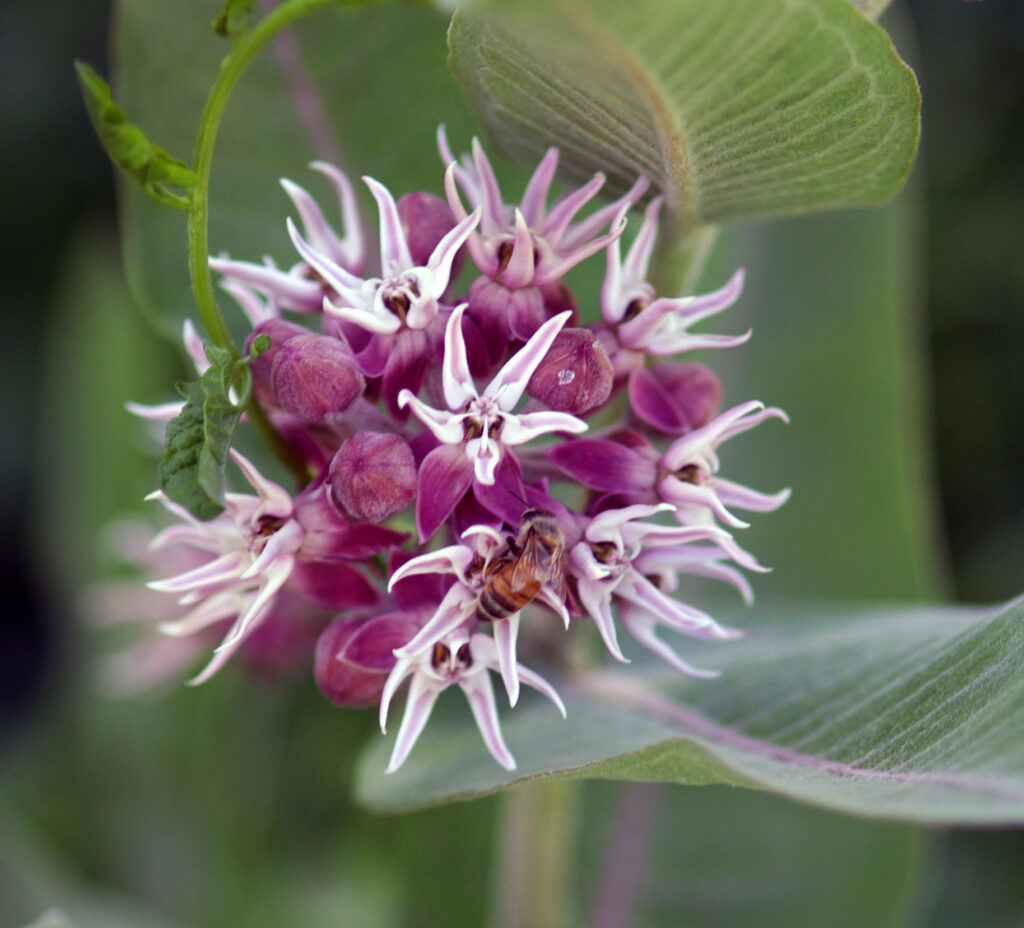


Twice I’ve witnessed Monarchs mating on my property: once in flight and this one on an Alberta spruce that’s within six feet of showy milkweed.






My Monarch Remediation Project: A Roadside Diner for Butterflies
-Paco Daniels
After hearing about the problems facing monarch butterflies a few years back, I became aware of native milkweed in our yard. When we bought our lot in a subdivided horse ranch, it was planted in wheat grass. Over the last twenty-plus years various portions grew wild, offering a broad palate of native plants. Certainly, one of the most amazing volunteer plants out there is the showy milkweed. Mid-June brings the first of these globular flowers with their beautiful and alluring scent. Abundant yellow swallowtails and some smaller butterfly species appear first, and in late June the first monarchs arrive. I read that since we live west of the Rocky Mountains, our monarchs overwinter in a eucalyptus tree near Monterey, California. Our monarchs were most abundant in July and August, although we continued seeing them into October. Knowing that milkweed are the only plants that will sustain their larvae, it was gratifying to see these stunning insects flapping from blossom to blossom, sipping nectar from the showy milkweeds. Their numbers have been in a sharp decline in recent years, at least in part from the over-use of herbicides and pesticides. I began to think of my 200 or so showy milkweed plants as a butterfly organic roadside diner, although one could argue it’s more akin to a butterfly soup kitchen since it’s all free.
The high point for me was seeing a pair of these striking butterflies mating just a few feet from the milkweed preserve. Here was solid evidence that my milkweed preserve was helping. I was mowing grass when I saw them, attracted by bright flashing orange on an Alberta spruce. I ran to my house, grabbed my camera and tripod, and ran back out and started capturing images. At times the male was actively flapping his wings, and then they’d be still for a while before returning to a frenzy. Later in the summer my sight was attracted by an orange flash in the sky. It appeared to be a monarch, but its haphazard, uneven flight—dropping several inches between flaps—was confounding. After it landed in a dawn redwood, I could see it was two butterflies.
The showy milkweed is a wonderful plant to have in your yard. After their stunning floral and aromatic displays, they form attractive seed pods that dry and release amazingly silky white seed threads that drift with the wind, spreading the monarch’s favorite food. In autumn, the dried plants provide a colorful yellow and tan accent to the yard. Most years, they require no maintenance. This spring was warmer and wetter than normal. As a result, our wild yellow sweet clover really took off and began crowding the milkweed, so I intervened with a bit of weeding, as I did later when bindweed became a problem.
Monarchs attract our attention because of their beauty. Undoubtedly thousands of less conspicuous species suffer deleterious consequences from modern industrial scale farming practices. Thank you to the Sierra Club for spreading the word. Every little bit helps.
Paco Daniels, Sierra Club Member since 2003
I sent this with the images to the Sierra Club in 2016 in an email and told them they could use it. I never heard a word. Since then, the Western Monarch has been decimated. There were millions in the 1980s. Now there are 30,000, a 99% drop.
UPDATE: I arrived home August 18, 2021 and saw at least one monarch daily for several weeks. Some were dining on my showy milkweeds.
